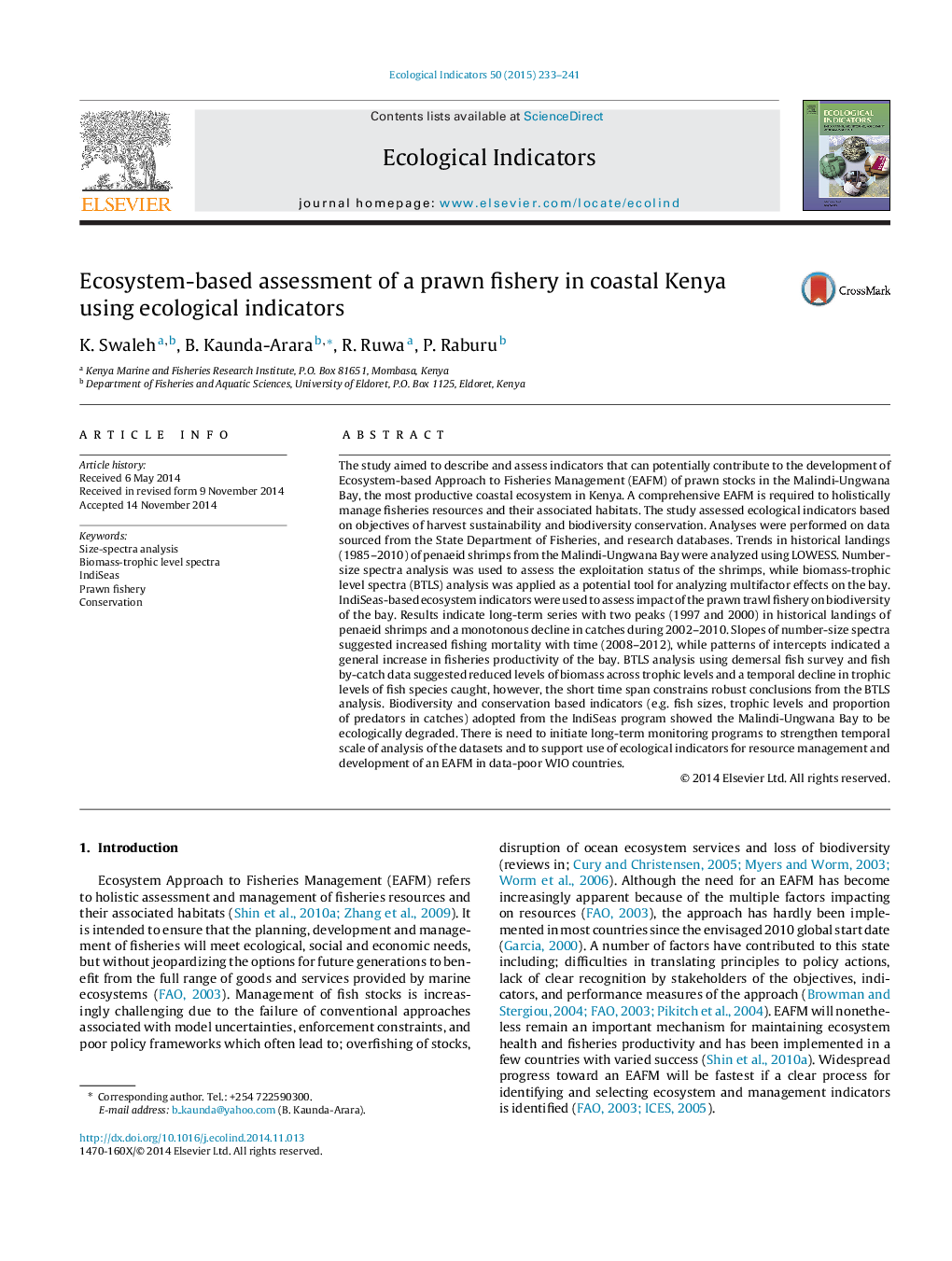| Article ID | Journal | Published Year | Pages | File Type |
|---|---|---|---|---|
| 6294768 | Ecological Indicators | 2015 | 9 Pages |
Abstract
The study aimed to describe and assess indicators that can potentially contribute to the development of Ecosystem-based Approach to Fisheries Management (EAFM) of prawn stocks in the Malindi-Ungwana Bay, the most productive coastal ecosystem in Kenya. A comprehensive EAFM is required to holistically manage fisheries resources and their associated habitats. The study assessed ecological indicators based on objectives of harvest sustainability and biodiversity conservation. Analyses were performed on data sourced from the State Department of Fisheries, and research databases. Trends in historical landings (1985-2010) of penaeid shrimps from the Malindi-Ungwana Bay were analyzed using LOWESS. Number-size spectra analysis was used to assess the exploitation status of the shrimps, while biomass-trophic level spectra (BTLS) analysis was applied as a potential tool for analyzing multifactor effects on the bay. IndiSeas-based ecosystem indicators were used to assess impact of the prawn trawl fishery on biodiversity of the bay. Results indicate long-term series with two peaks (1997 and 2000) in historical landings of penaeid shrimps and a monotonous decline in catches during 2002-2010. Slopes of number-size spectra suggested increased fishing mortality with time (2008-2012), while patterns of intercepts indicated a general increase in fisheries productivity of the bay. BTLS analysis using demersal fish survey and fish by-catch data suggested reduced levels of biomass across trophic levels and a temporal decline in trophic levels of fish species caught, however, the short time span constrains robust conclusions from the BTLS analysis. Biodiversity and conservation based indicators (e.g. fish sizes, trophic levels and proportion of predators in catches) adopted from the IndiSeas program showed the Malindi-Ungwana Bay to be ecologically degraded. There is need to initiate long-term monitoring programs to strengthen temporal scale of analysis of the datasets and to support use of ecological indicators for resource management and development of an EAFM in data-poor WIO countries.
Keywords
Related Topics
Life Sciences
Agricultural and Biological Sciences
Ecology, Evolution, Behavior and Systematics
Authors
K. Swaleh, B. Kaunda-Arara, R. Ruwa, P. Raburu,
